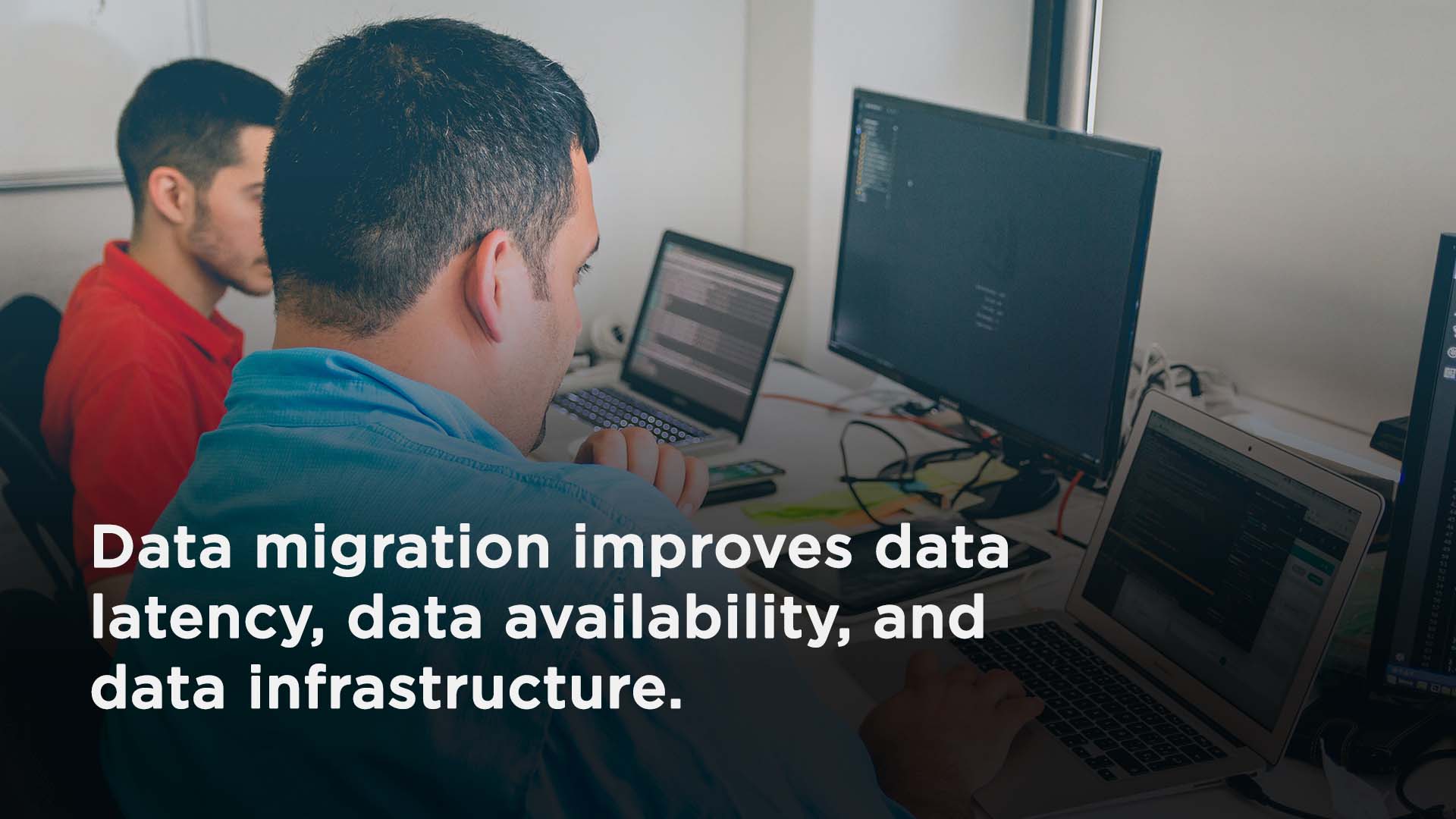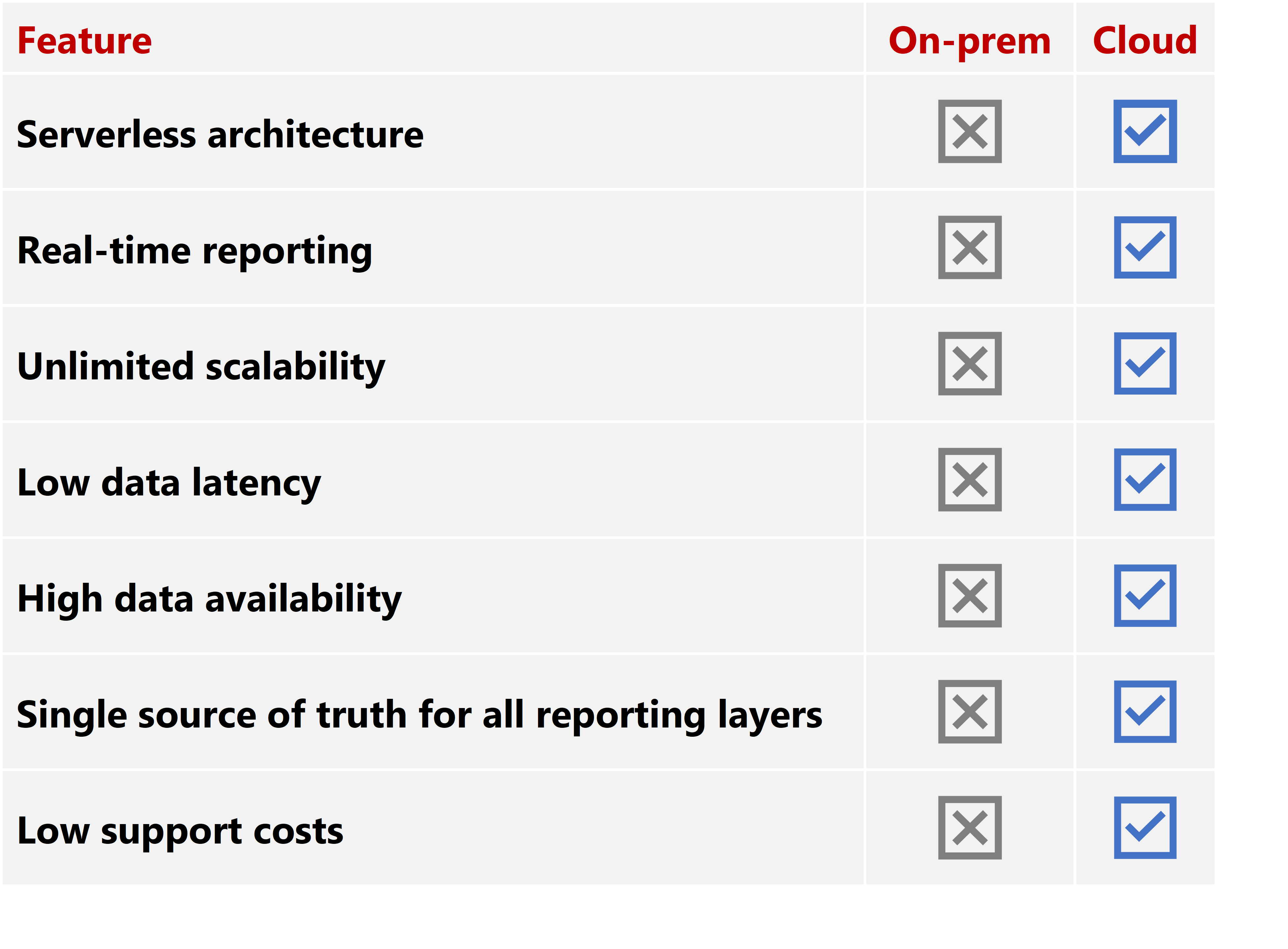
Business case
Key challenges
·
Enable real-time reporting
·
Facilitate independent refreshes of multiple
data streams
·
Simplify infrastructure management and
maintenance
·
Reduce overall costs
· Ensure data security and compliance during and after migration
Our solution
 |
| Table 1: Feature Breakdown On-prem Versus Cloud Architecture |
1. Security and compliance:
o Azure Security Center: Implemented Azure Security Center for unified security management and advanced threat protection across the hybrid cloud environment. This included real-time threat detection, vulnerability assessment, and adherence to security best practices. All of this helped to protect data during and after the migration.
o Azure
Active Directory (AD): Integrated Azure AD for secure, single sign-on (SSO)
and identity management. This ensured that only authorized personnel had access
to sensitive data and applications, with multi-factor authentication (MFA)
enforced for added security.
o Encryption:
Used Azure's built-in encryption features, including encryption at rest (using
Azure Storage Service Encryption) and in transit (using SSL/TLS), to protect
data integrity and confidentiality.
o Virtual Network (VNet): Set up Azure Virtual Network to provide a secure and isolated environment for cloud resources. This allowed for private IP address spaces, controlled communication between Azure resources, and secure access to the on-premises network via VPN Gateway.
o Network Security Groups (NSGs): Applied NSGs to control inbound and outbound traffic to Azure resources. This ensured that only necessary traffic was allowed and unauthorized access was blocked.
o Azure Firewall: Deployed Azure Firewall to provide a fully stateful, scalable network security solution that protects Azure Virtual Network resources from malicious threats.
o Azure Private Link: Used Azure Private Link to provide private connectivity to Azure services over a private endpoint in the Virtual Network. This improved security by eliminating exposure to the public internet.
1.
Migration
and implementation:
o Azure Data Warehouse: Opted for Azure Data Warehouse due to its scalability and performance benefits. The migration process involved setting up a robust data warehouse architecture to efficiently handle the transfer of 50 terabytes of data daily.
o Azure Data Lake Storage: Used for scalable and secure data storage, enabling seamless integration with other Azure services while ensuring data protection through built-in encryption and access controls.
o
Azure
Databricks: Employed for advanced data processing and analytics, ensuring
fast and efficient data handling while using security features such as
role-based access control (RBAC).
o
Tabular
Models and SQL: Used for data modeling and publication, improving data
accessibility and usability with secure access controls.
o Power BI and Excel: Used for data visualization, providing intuitive dashboards and reports for business users, with secure data access and sharing features.
2.
Operational
Excellence:
o
Real-time
reporting: Implemented a real-time data refresh pipeline to support timely
reporting and analytics, with secure data transfer and processing practices.
o Intelligent
job monitoring: Developed a monitoring and validation framework to manage
and verify data refreshes based on source availability, ensuring data accuracy
and security.
Business outcomes
·
Improved security: Implemented
comprehensive security measures, including Azure Security Center, encryption,
VNet, and private connectivity options. These were implemented to ensure robust
data protection throughout the migration process and beyond.
· Improved processing speed: The migration
to Azure Data Warehouse enabled real-time reporting and reduced data latency,
with a refresh cycle that is twice as efficient.
· Reduced costs: The transition to a cloud-based infrastructure reduced maintenance costs and eliminated the need for frequent server upgrades.
· Enabled scalability and flexibility: Azure’s scalable architecture provides unlimited growth potential and allows for seamless handling of large data volumes.
Highlights
·
Successfully migrated from on-premises servers to a secure, scalable cloud environment.
·
Achieved faster data processing and real-time reporting capabilities.
·
Reduced data refresh cycle time by 50% and overall maintenance costs.
·
Ensured comprehensive security and compliance with Azure’s advanced features, including VNet, encryption, and private connectivity.
